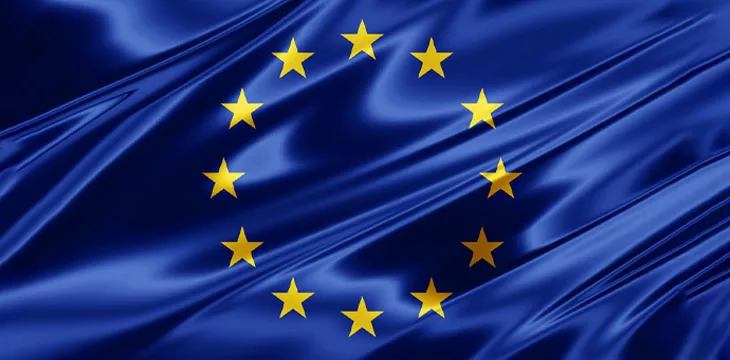In 2021, the European Commission presented its 2030 Digital Decade vision to the world. The ambitious program outlined plans to transform the region, ensuring 80% of citizens have basic digital skills, digitally transforming businesses, and shooting for universal gigabit connectivity, among other aims.
However, in 2022, experts reported that only a quarter of EU firms had adopted artificial intelligence (AI). This prompted some to warn that the EU may miss its Digital Decade goals by 10 years or more.
In 2023, it looks as if the EU has turned a corner. A report by Amazon Web Services indicates that one-third of all EU firms have adopted AI or begun experimenting with it.
“The accelerated uptake of AI last year has helped put Europe on track to meet its Digital Decade goals,” said Tanuja Randery, Managing Director at AWS.
The EU is leading when it comes to blockchain technology
No Digital Decade plans would be sound without a push for the adoption of blockchain technology, and in this area, the EU has been a consistent leader.
In 2018, the EU launched the European Blockchain Services Infrastructure (EBSI), a collaboration between the European Commission and 29 EU member states to support the digitalization of EU public services. Secure cross-border transactions, digital identity
management, and supply chain management are all being revitalized under EBSI.
Europeum is another initiative directed toward public administration applications. It will facilitate processes like EU-wide driver license recognition and VAT declarations and potentially support the digital euro and digital twins of EU cities.
The European Digital Infrastructure Consortium (EDIC), set to be operational by the end of 2024, will steer blockchain policy and support the deployment of applications that use it. Unlike EBSI, EDIC is guided and funded by member states. The initial focus will be public applications such as digital wallets, licenses, identities, and supply chain tracking.
What about regulations? The EU has been quick off the mark in this sphere, too. The
Markets in Crypto Assets (MiCA) framework governs crypto-assets, their issuers, and crypto-asset service providers. MiCA makes rules uniform across the Union.
Other rules require that crypto-asset transfers carry detailed information on the source and beneficiary, including removing the minimum thresholds. Some legislation calls for a public registry of businesses handling crypto-assets and an extension of the Travel Rule to cover them.
Could the region find some much-needed economic growth due to its leading stance on blockchain? Time will tell, but for now, it’s an example for others to follow. The EU may be playing catch up when it comes to some digital technologies like AI, but it’s well ahead when it comes to blockchain.
In order for artificial intelligence (AI) to work right within the law and thrive in the face of growing challenges, it needs to integrate an enterprise blockchain system that ensures data input quality and ownership—allowing it to keep data safe while also guaranteeing the immutability of data. Check out CoinGeek’s coverage on this emerging tech to learn more why Enterprise blockchain will be the backbone of AI.
Watch: Patrick Prinz discusses BSV adoption in Europe

 08-25-2025
08-25-2025 





